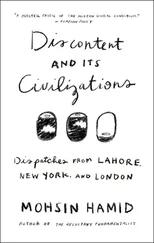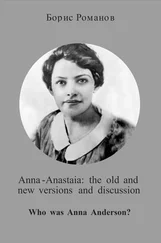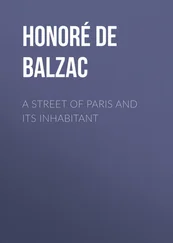Henry Edwards - Old and New Paris - Its History, Its People, and Its Places, v. 1
Здесь есть возможность читать онлайн «Henry Edwards - Old and New Paris - Its History, Its People, and Its Places, v. 1» — ознакомительный отрывок электронной книги совершенно бесплатно, а после прочтения отрывка купить полную версию. В некоторых случаях можно слушать аудио, скачать через торрент в формате fb2 и присутствует краткое содержание. Жанр: foreign_antique, foreign_prose, Путешествия и география, на английском языке. Описание произведения, (предисловие) а так же отзывы посетителей доступны на портале библиотеки ЛибКат.
- Название:Old and New Paris: Its History, Its People, and Its Places, v. 1
- Автор:
- Жанр:
- Год:неизвестен
- ISBN:нет данных
- Рейтинг книги:4 / 5. Голосов: 1
-
Избранное:Добавить в избранное
- Отзывы:
-
Ваша оценка:
- 80
- 1
- 2
- 3
- 4
- 5
Old and New Paris: Its History, Its People, and Its Places, v. 1: краткое содержание, описание и аннотация
Предлагаем к чтению аннотацию, описание, краткое содержание или предисловие (зависит от того, что написал сам автор книги «Old and New Paris: Its History, Its People, and Its Places, v. 1»). Если вы не нашли необходимую информацию о книге — напишите в комментариях, мы постараемся отыскать её.
Old and New Paris: Its History, Its People, and Its Places, v. 1 — читать онлайн ознакомительный отрывок
Ниже представлен текст книги, разбитый по страницам. Система сохранения места последней прочитанной страницы, позволяет с удобством читать онлайн бесплатно книгу «Old and New Paris: Its History, Its People, and Its Places, v. 1», без необходимости каждый раз заново искать на чём Вы остановились. Поставьте закладку, и сможете в любой момент перейти на страницу, на которой закончили чтение.
Интервал:
Закладка:
Wraxall tells the story somewhat differently. “Selwyn’s nervous irritability,” he says, “and anxious curiosity to observe the effect of dissolution on men, exposed him to much ridicule, not unaccompanied with censure. He was accused of attending all executions, disguised sometimes, to elude notice, in female attire. I have been assured that in 1756 (or 1757) he went over to Paris expressly for the purpose of witnessing the last moments of Damiens, who expired in the most acute tortures for having attempted the life of Louis XV. Being among the crowd, and attempting to approach too near the scaffold, he was at first repulsed by one of the executioners, but having explained that he had made the journey from London solely with a view to be present at the punishment and death of Damiens, the man immediately caused the people to make way, exclaiming at the same time: – ‘Faites place pour monsieur; c’est un Anglais et un amateur.’”
According to yet another story on this doleful subject, for which Horace Walpole is answerable, the Paris executioner, styled “Monsieur de Paris,” was surrounded by a number of provincial executioners, “Monsieur de Rouen,” “Monsieur de Bordeaux,” and so on. Selwyn joined the group, and on explaining to the Paris functionary that he was from London, was saluted with the exclamation, “Ah, monsieur de Londres!”
Among the minor celebrations of which the interior of Notre Dame has been the scene may be mentioned a mass said some twenty years before the Revolution for the broken arm of the famous dancer, Madeleine Guimard. One evening, when the fascinating Madeleine was performing in Les fêtes de l’Hymen et de l’Amour , a heavy cloud fell from the theatrical heavens upon one of her slender arms and broke it. Then it was that the services of the Church were invoked on behalf of the popular ballerina .
The interesting and graceful, though far from beautiful, Madeleine, was justly esteemed by the clergy; for during the severe winter of 1768 she had given to every destitute family in her neighbourhood enough to live on for a year, at the same time paying personal visits to each of them. “Not yet Magdalen repentant, but already Magdalen charitable!” exclaimed a famous preacher, in reference to Madeleine Guimard’s good action. “The hand,” he added, “which knows so well how to give alms will not be rejected by St. Peter when it knocks at the gate of Paradise.”
The Paris Cathedral has, strangely enough, been the scene, both in ancient and modern times, of dramatic performances. There, in the olden days, “Mysteries” were represented; and there, in 1790, a melodrama was played, entitled “The Taking of the Bastille,” and described as “specially written for Notre Dame.” This performance was followed by a grand Te Deum, sung by members of the Opera, though one of the first effects of the Revolution was to drive the best singers away from Paris. Soon afterwards, music, history, and religion were once more to be intermingled. This was in August, 1792. when the last day of the French Monarchy (August 10) was at hand.
The most imposing ceremony ever witnessed within the walls of Notre Dame was, as before said, the Coronation of Napoleon Bonaparte, at the hands of the Pope, on Sunday, the 2nd December, 1804. The Holy Father set out with his retinue at ten o’clock in the morning, and much earlier than the Emperor, in order that the ecclesiastical and royal processions should not clash. He was accompanied by a numerous body of clergy, gorgeously attired and resplendently ornamented, whilst his escort consisted of detachments of the Imperial Guard. A richly decorated portico had been erected all around the Place Notre Dame to receive on their descent from the royal carriages the sovereigns and princes who were to proceed to the ancient basilica. Already, when the Pope entered the church, there were assembled within it the deputies of the towns, the representatives of the magistracy and the army, the sixty bishops, with their clergy, the Senate, the Legislative Body, the Council of State, the Princes of Nassau, Hesse, and Baden, the Arch-Chancellor of the Germanic Empire, and the ministers of the different European Powers. The great door of Notre Dame had been closed, because the back of the Imperial throne was placed against it. The church, therefore, was entered by the side doors, situated at the two extremities of the transept. When the Pope, preceded by the cross and by the insignia of his office, appeared, the whole assembly rose from their seats, and a body of five hundred instrumentalists and vocalists gave forth with sublime effect the sacred chant, Tu es Petrus . The Pope walked slowly towards the altar, before which he knelt, and then took his place on a throne that had been prepared for him to the right of the altar. The sixty prelates of the French Church presented themselves in succession to salute him, and the arrival of the Imperial family was now awaited.
The cathedral had been magnificently adorned. Hangings of velvet, sprinkled with golden bees, descended from roof to pavement. At the foot of the altar stood two plain arm-chairs which the Emperor and Empress were to occupy before the ceremony of crowning. At the western extremity of the church, and just opposite the altar, raised upon a staircase of twenty-four steps and placed between imposing columns, stood an immense throne – an edifice within an edifice – on which the Emperor and Empress were to seat themselves when crowned.
The Emperor did not arrive until considerably after the hour appointed, and the position of the Pope was a painful one during this long delay, which was due to the excessive precautions taken to prevent the two processions from getting mixed. The Emperor set out from the Tuileries in a carriage which seemed entirely made of glass, and which was surmounted by gilt genii bearing a crown. He was attired in a costume designed expressly for the occasion, in the style of the sixteenth century. He wore a plumed hat and a short mantle. He was not to assume the Imperial robes until he had entered the cathedral. Escorted by his marshals on horseback, he advanced slowly along the Rue St. Honoré, the Quays of the Seine, and the Place Notre Dame, amidst the acclamations of immense crowds, delighted to see their favourite general at last invested with Imperial power. On reaching the portico, already spoken of, Napoleon alighted from his carriage and walked towards the cathedral. Beside him was borne the grand crown, in the form of a tiara, modelled after that of Charlemagne. Up to this point Napoleon had worn only the crown of the Cæsars: a simple golden laurel. Having entered the church to the sound of solemn music, he knelt, and then passed on to the chair which he was to occupy before taking possession of the throne.
The ceremony then began. The sceptre, the sword, and the Imperial robe had been placed on the altar. The Pope anointed the Emperor on the forehead, the arms, and the hands; then blessed the sword, with which he girded him, and the sceptre, which he placed in his hand; and finally proposed to take up the crown. Napoleon, however, saved him all possible trouble in the matter by crowning himself.
“This action,” says M. Thiers, in his description of the ceremony, “was perfectly appreciated by all present, and produced an indescribable effect,” though it may be doubted whether in crowning himself Napoleon departed from the traditional practice at Imperial coronations. We have at all events in our own time seen, at several coronations, emperors, and even kings, assert the autocratic principle by taking the crown from the hands of the officiating prelate to place it on their own head without his aid.
Napoleon, taking the crown of the Empress, now approached Josephine, and as she knelt before him, placed it with visible tenderness upon her head, whereupon she burst into tears.
Читать дальшеИнтервал:
Закладка:
Похожие книги на «Old and New Paris: Its History, Its People, and Its Places, v. 1»
Представляем Вашему вниманию похожие книги на «Old and New Paris: Its History, Its People, and Its Places, v. 1» списком для выбора. Мы отобрали схожую по названию и смыслу литературу в надежде предоставить читателям больше вариантов отыскать новые, интересные, ещё непрочитанные произведения.
Обсуждение, отзывы о книге «Old and New Paris: Its History, Its People, and Its Places, v. 1» и просто собственные мнения читателей. Оставьте ваши комментарии, напишите, что Вы думаете о произведении, его смысле или главных героях. Укажите что конкретно понравилось, а что нет, и почему Вы так считаете.












